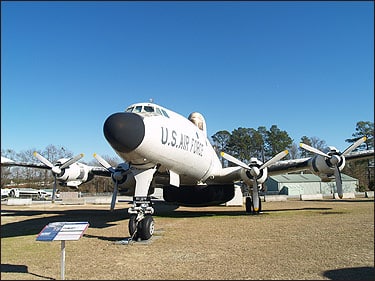The Lockheed EC-121 Warning Star was a United States Navy and United States Air Force Airborne early warning and control radar surveillance aircraft. A military version of the Lockheed L-1049 Super Constellation, it was designed to serve as an airborne early warning system to supplement the Distant Early Warning Line, using two large radomes, a vertical dome above and a horizontal one below the fuselage. EC-121s were also used for intelligence gathering (SIGINT).
It was introduced in 1954 and retired from service in 1978, although a single specially modified EW aircraft remained in service with the U.S. Navy until 1982. The U.S. Navy versions when initially procured were designated WV-1 (PO-1W), WV-2, and WV-3. Warning Stars of the U.S. Air Force served during the Vietnam War as both electronic sensor monitors and as a forerunner to the Boeing E-3 Sentry AWACS. U.S. Air Force aircrews adopted the civil nickname, Connie (diminutive of Constellation) as reference, while naval aircrews used the term “Willie Victor” based on a slang version of the NATO phonetic alphabet and the Navy’s pre-1962 “WV-” designations for the aircraft type.









